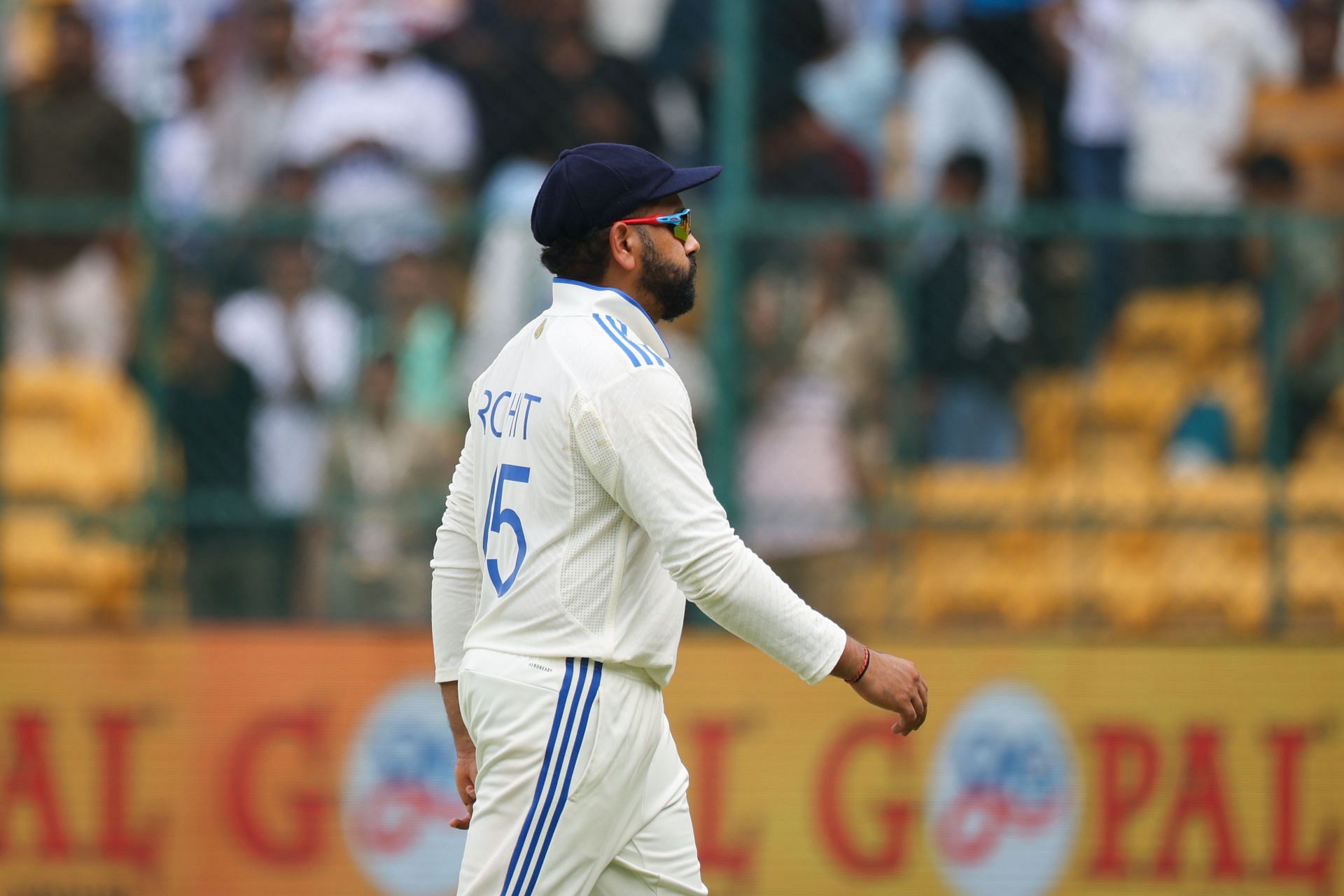
Rohit Sharma's 3 captaincy errors that hurt India in 1st 2024 Test vs New Zealand
Team India slumped to a humbling eight-wicket defeat to New Zealand in the series opener at the M Chinnaswamy Stadium in Bengaluru. Rohit Sharma and company were skittled out for a record-low of 46 in the first innings, and despite a heroic attempt to comeback, ended up on the losing side.
This marks one of the rare instances where India have slipped on home soil, and this loss also goes down in history books as one of their worst home losses in recent times. When things go awry in familiar conditions, naturally, the fingers are pointed towards the skipper. In some losses, there is not much that the skipper could have personally done to improve the situation, but this was not one of those cases.
India usually prides on their relentlessness and prowess in the subcontinent, but they were unable to assert themselves on the opposition this time around, and ended up chasing the game from the early stages itself.
On that note, let us take a look at Rohit Sharma's 3 captaincy errors that hurt India in the 1st 2024 Test vs New Zealand.
#1 Misreading the pitch and electing to bat first
A mistake that Rohit Sharma has already admitted to, the decision to bat first after winning the toss under a heavy cloud cover and a three-pronged New Zealand pace attack, ended up backfiring. India struggled against the new ball on the pitch which swung and seamed around on the pitch which was under covers, while the New Zealand bowlers took full advantage of the situation to bowl out India for just 46 runs.
The idea behind the decision was to survive the initial tough phase of play, and then capitalize when the conditions improve, and avoid having to bat in the fourth innings. However, the conditions eased considerably when New Zealand came out to bat. With the sun out and minimal help for bowlers, they piled on 402 runs in the first innings.
Rohit Sharma could also be faulted for his bowling changes during the prospering eighth wicket partnership between Rachin Ravindra and Tim Southee. The latter, being a lower-order batter, scored 65 runs off 73 deliveries and only had to face Bumrah when he was within touching distance of his half-century.
#2 Benching Akash Deep
New Zealand showcased what three pacers could do on the wicket by picking up the majority of India's 20 wickets. India had followed the three-seamer policy in their home season so far, but surprisingly opted against it when the conditions were the most seamer-friendly.
The case for the third spinner was that the pitch would deteriorate as the game progresses, and they would come into play in the second innings. However, when the final innings did arrive when India had to defend 107, spinners were kept on the back burner.
The spin trio were largely absent in the proceedings on Day 5, with Jadeja coming into the attack in the 13th over, while Ashwin was given the ball when New Zealand were a couple of shots away from the win.
To make matters worse, with Siraj far from his best, it felt as if India were playing with a solitary seamer. The over-dependence on Bumrah was apparent, and the in-form Akash Deep's presence for the remainder of the series might be something non-negotiable, either by dropping one of the spinners or Siraj, depending on the surface.
#3 Approach on Day 5
In India's famous win over Australia at the Wankede two decades ago, where they had defended 107, Zaheer Khan had provided the early breakthrough, and then the spinners took over the proceedings.
Although the pitch and the scenario were slightly different in this case, one imagined a similar sort of game plan. Bumrah had done his job by providing the early breakthrough, but pacers bowling 13 overs on the trot on a Day 5 pitch, with one of them being an out-of-form Siraj was a plan that went astray.
The pacers did challenge the edge and test the batters, but the vital breakthrough just did not come. By the time the spinners were introduced, New Zealand were already well comfortable, and scored the remaining runs with ease.
Ravichandran Ashwin, arguably India's best fourth innings bowler, was the last one introduced on a Day 5 pitch in India. Granted his performance in the first innings was dismal, but that does not explain the decision to hold him back for so long.